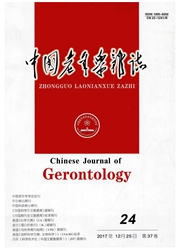

 中文摘要:
中文摘要:
目的探讨急性缺血性脑卒中患者入院时体温水平与出院结局的关系。方法采用回顾性队列研究的方法,连续性纳入内蒙古兴安盟人民医院神经内科2009年6月1日到2012年5月31日住院的3 440例急性缺血性脑卒中病人,收集人口统计学、生活方式、临床表现和实验室检验资料,结局不良组定义为患者出院时改良Rankin量表评分(MRs)≥3分。体温水平按腋温分为四组,分别为≤36℃、36.01℃~36.50℃、36.51℃~37.00℃、≥37.01℃。用非条件logistic回归分析入院时体温水平与急性缺血性脑卒中出院结局不良的关系。结果发生结局不良359例(10.44%)。单因素非条件logistic回归分析显示:入院体温中,以最低体温组为参比,第3、4体温组发生结局不良的OR(95%CI)分别为:1.48(1.04~2.11)和3.97(2.46~6.42)。在调整了年龄、高血压、高血糖、脑卒中病史、高甘油三酯、吸烟、饮酒后,结果显示,相对于最低体温组,第3、4体温组发生结局不良的OR(95%CI)分别为:1.51(1.04~2.18)和3.39(2.04~5.61),存在着剂量反应关系(趋势性检验为18.953 6,P<0.000 1)。结论入院时体温水平升高可增加急性缺血性脑卒中出院结局不良发生率的风险,并且是独立的危险因素。建议今后的临床治疗和护理中可采取措施将体温控制在36.5℃之下,以预防急性缺血性脑卒中不良结局的发生。
 英文摘要:
英文摘要:
Objective To examine the association between admission body temperature level of patients with acute ischemic stroke and discharged outcome.Methods 3 440 acute ischemic stroke patients were continuity included.Poor discharged outcome was defined as the Modified Rankin′s ( MRs) Stroke Scale,score of 3 or more ( MRs≥3 ) was defined at outcome.The cases were divided into four groups according to the axillary temperature results,for respectively≤36℃,36.01℃~36.50℃,36.51℃~37.00℃,≥37.01℃.The correlation of admission body temperature of patients with acute ischemic stroke and discharged outcome were analyzed by unconditioned logistic regression analysis.Results A total of 359 people(10.44%) occurred poor outcomes.The relative to the lowest group of body temperature,the third and fourth group OR (95%CI) were:1.48(1.04~2.11)和3.97(2.46~6.42).The relative to the lowest temperature was set,for poor outcome occurred,the third and fourth group OR(95%CI) were:1.51(1.04~2.11)and 3.39(2.46~6.42).There was a dose-response relationship(Trend test for =18.953 6,P<0.000 1) .Conclusions Elevated body temperature levels on admission for acute ischemic stroke might increase the risk of discharged outcome,and is an independent risk factor.Recommendations for future clinical treatment and care could take steps to control body temperature below 36.5 ℃,in order to prevent discharged outcome in acute chemic stroke incidence.
 同期刊论文项目
同期刊论文项目
 同项目期刊论文
同项目期刊论文
 期刊信息
期刊信息
